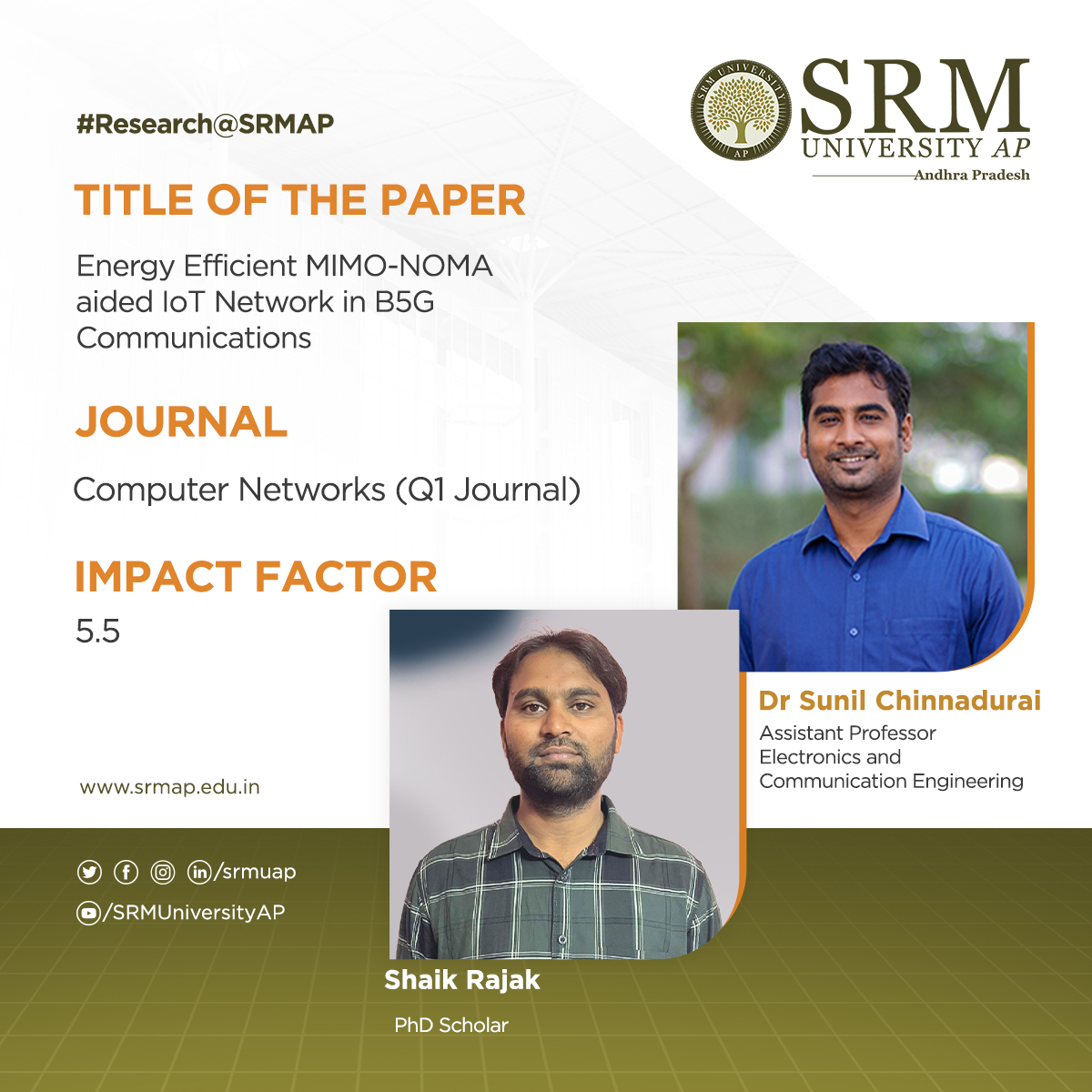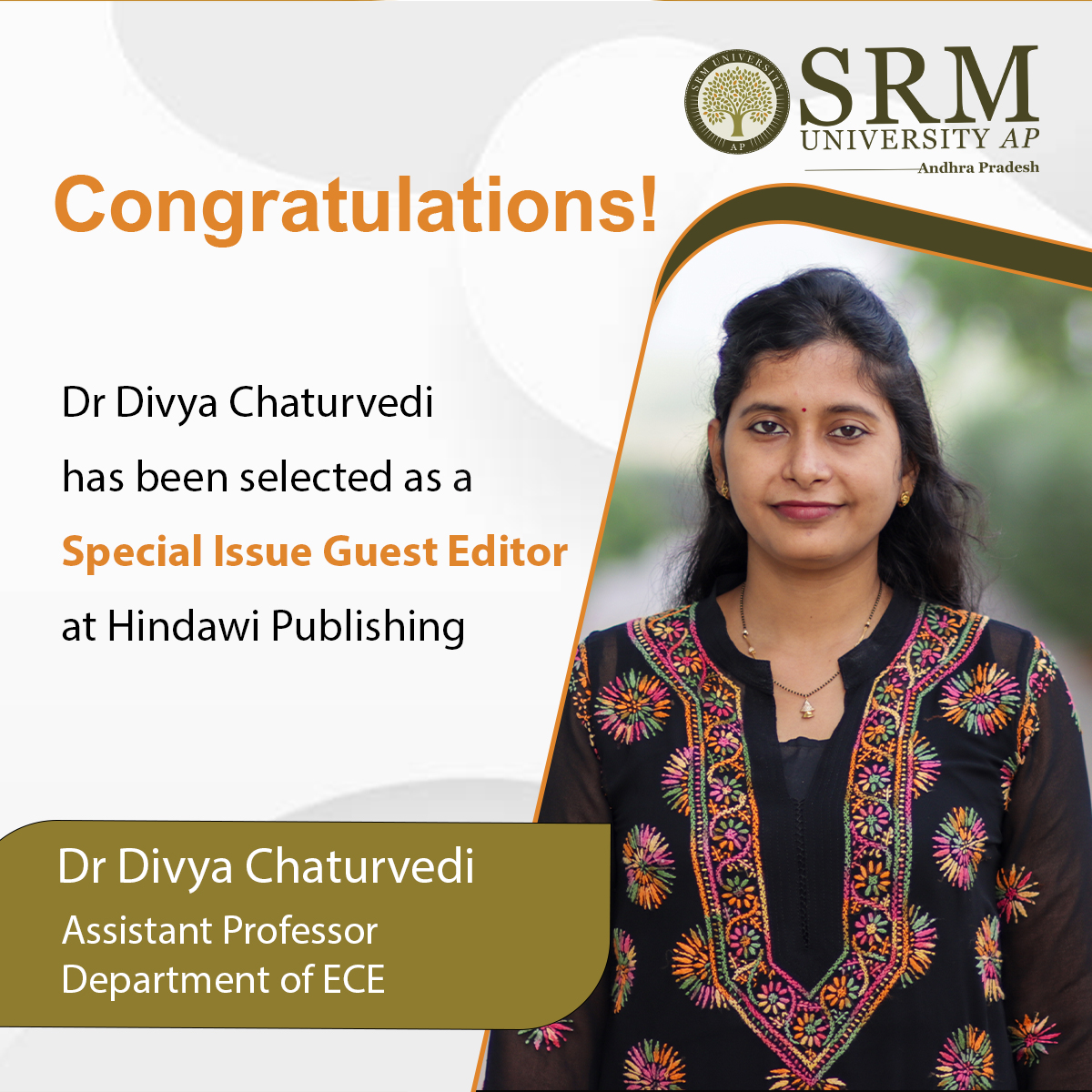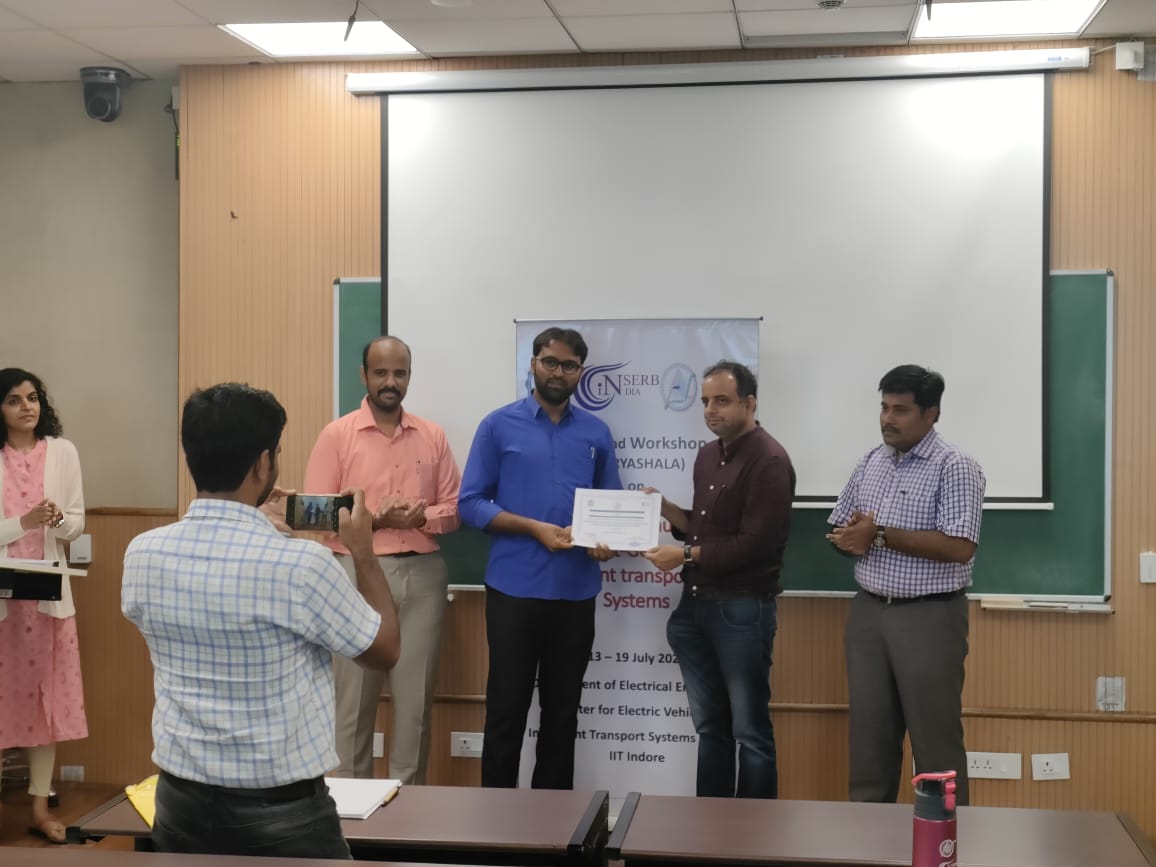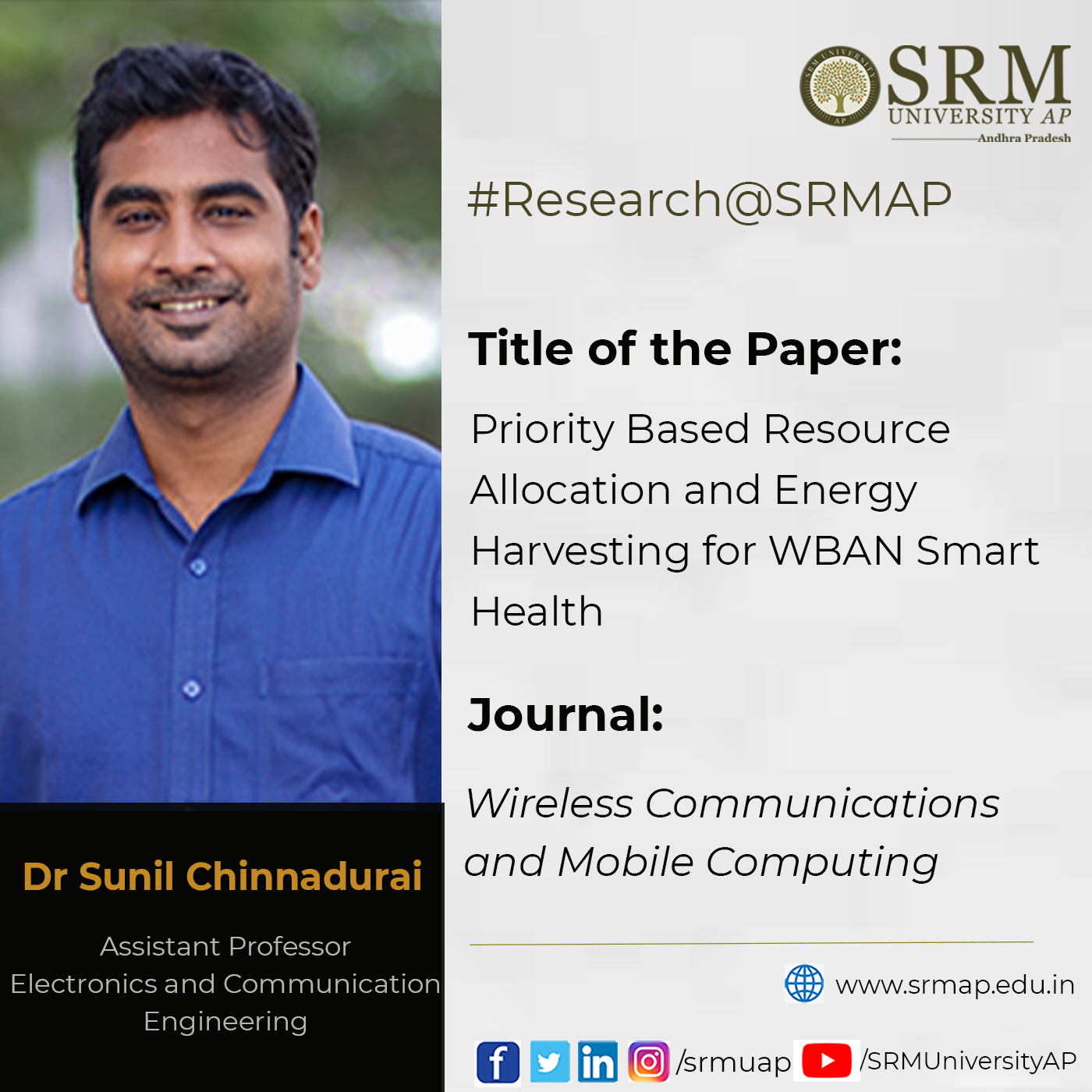Recent News
- A multifarious study on Low-Power Wide-Area Networks August 25, 2022

The Department of Electronics and Communication Engineering is delighted to announce that Assistant Professor Dr Anirban Ghosh and Research Scholar Mr Naga Srinivasarao Chilamkurthy have published their article titled “Low-Power Wide-Area Networks: A Broad Overview of its different aspects” in IEEE Access, a Q1 Journal, having an Impact Factor of 3.476. The work was published in collaboration with Dr Om Jee Pandey from the Indian Institute of Technology BHU, Dr Cenkeramaddi Linga Reddy from the University of Agder, and Dr Hong-Ning Dai from Hong Kong Baptist University, Hong Kong.
This is a survey article on Low-power Wide-area networks which provides a detailed description of LPWAN technologies in the context of IoT applications. In this survey article, they review and provide an overarching description of LPWAN in terms of design goals, techniques to improve design objectives, and system architecture. They have also evaluated several existing and non-standardized LPWAN technologies and the market opportunities of LPWAN. With the help of this article, the researchers can choose the best LPWAN technology for their specific applications.
The practical implementation of the article can be found in various social and commercial applications such as smart healthcare, intelligent transportation, climate-smart agriculture, rescue operations, logistics, smart cities, industries, utilities, smart buildings, consumer electronics, security, asset tracking, smart waste management systems, cognitive manufacturing, and Machine-to-Machine (M2M) communications. Their future research plans include working on Wireless Sensor Networks, Low-Power Wide-Area Networks, Small-World Networks, and applying machine learning and reinforcement learning techniques in the context of wireless networks for cyber-physical systems and IoT applications.
Abstract of the Research
Low-power wide-area networks (LPWANs) are gaining popularity in the research community due to their low power consumption, low cost, and wide geographical coverage. LPWAN technologies complement and outperform short-range and traditional cellular wireless technologies in a variety of applications, including smart city development, machine-to-machine (M2M) communications, healthcare, intelligent transportation, industrial applications, climate-smart agriculture, and asset tracking. This review paper discusses the design objectives and the methodologies used by LPWAN to provide extensive coverage for low-power devices. We also explore how the presented LPWAN architecture employs various topologies such as star and mesh. We examine many current and emerging LPWAN technologies, as well as their system architectures and standards, and evaluate their ability to meet each design objective. In addition, the possible coexistence of LPWAN with other technologies, combining the best attributes to provide an optimum solution is also explored and reported in the current overview. Following that, a comparison of various LPWAN technologies is performed, and their market opportunities are also investigated. Furthermore, an analysis of various LPWAN use cases is performed, highlighting their benefits and drawbacks. This aids in the selection of the best LPWAN technology for various applications. Before concluding the work, the open research issues, and challenges in designing LPWAN are presented.
- Energy efficient MIMO-NOMA aided IoT network in B5G communications August 8, 2022

The Department of Electronics and Communication Engineering is glad to announce that Assistant Professor Dr Sunil Chinnadurai and his research scholar Mr Shaik Rajak have published a paper titled “Energy Efficient MIMO-NOMA aided IoT Network in B5G Communications” in the Q1 journal Computer Networks having an Impact Factor of 5.5. With an intent to accelerate the development of future intelligence wireless systems, the paper proposes an energy-efficient massive multiple-input-multiple-output (MIMO)- non-orthogonal multiple access (NOMA) aided internet of things (IoT) network to support the massive number of distributed users and IoT devices with seamless data transfer and connectivity.
Abstract of the research
Massive MIMO has been identified as a suitable technology to implement the energy efficient IoT network beyond 5G (B5G) communications due to its distinct characteristics with a large number of antennas. However, providing fast data transfer and maintaining hyperconnectivity between the IoT devices in B5G communications will bring the challenge of energy deficiency. Hence, they considered a massive MIMO-NOMA aided IoT network considering imperfect channel state information and practical power consumption at the transmitter. The far users of the base stations are selected to investigate the power consumption and quality of service. Then, they calculated the power consumption which is a non-convex function and non-deterministic polynomial problem. To solve the above problem, fractional programming properties are applied which converted the polynomial problem into the difference of convex function. And then they employed the successive convex approximation technique to represent the non-convex to convex function. Effective iterative-based branches and the reduced bound process are utilized to solve the problem. Numerical results observed that their implemented approach surpasses previous standard algorithms on the basis of convergence, energy efficiency, and user fairness.
Explanation of the research in layman’s terms
- A cost-effective (i.e., energy efficient) maximization problem for the multiple cells NOMA heterogeneous network scheme is explored when meeting the transmission power and data necessity of far users. The singular value uncertainty model (SVUM) is deliberated to add the errors with the transmitted signal. Since it’s a non-convex problem and challenging to solve, they used the properties of fractional programming to convert it into its corresponding mathematical terms. ITS needs higher data rate and seamless connectivity to operate with maximum speed and safety.
- SCA methods are then applied to change the optimisation problem. After that, an effective iterative scheme is employed based on Branch and Reduced Bound (BRB) that resolves the energy-efficient SVUM problem and satisfies the convergence criteria.
- The proposed iterative BRB method enhances user fairness and decreases inter-tier interference (ITI). IRS has been recognised as the key enabling technology to provide the data required by the ITS with less power consumption.
- Energy efficiency achieved by the proposed BRB method is examined with the help of numerical results and found that the proposed algorithm provides better efficacy than the majorisation minimisation (MM) method and the well-known OMA scheme.
Practical implementations of the research
- To provide high data rates to wireless sensors and the internet of things (IoT), future communication systems can ultimately be advanced by implementing NOMA, small cell, and heterogeneous networks (HetNets) along with MIMO.
- An energy-efficient massive MIMO-NOMA aided IoT network to support the massive number of distributed users and IoT devices with seamless data transfer and connectivity between them in B5G communications.
Future research plans
- To explore the energy efficiency of AI-driven IoT networks for applications such as intelligent health care and intelligent vehicular communications.
- MIMO-NOMA with IRS elements to reduce power consumption and improve the connectivity between the users.
- Dr Divya Chaturvedi to join as a special issue guest editor at Hindawi August 5, 2022

It is a matter of incredible honour to SRM University-AP, for Dr Divya Chaturvedi, Assistant Professor, Department of Electronics and Communication Engineering has been chosen as a special issue guest editor at Hindawi, one of the world’s largest publishers of peer-reviewed, fully open access journals of scientific, technical, and medical literature. Dr Divya has been keenly pursuing the umpteen possibilities of substrate integrated waveguide based cavity backed antennas, leaky wave antennas, wearable antennas for medical applications, and Multi-Input Multi-Output (MIMO) for 5G communication since the beginning of her career. And her research genius has bestowed her with numerous awards and recognitions over these years.
As a guest editor for Hindawi, Dr Divya would be responsible for the special issues “Substrate Integrated Waveguide (SIW) Based Circuits and Systems” and “The Future of Wireless Communications Systems: 5G and beyond” from the journals: International Journal of Antennas and Propagation and Journal of Computer Networks and Communications respectively. While the former aims to publish outstanding papers presenting cutting-edge advances in the field of microwave and millimetre-wave circuits and systems, the recent technological advancements in wireless communication systems will be focused in the latter.
Having served as the reviewer and member of various editorial boards and conferences, Dr Divya comes with a wealth of experience to put her expertise for the advancement of the publication. At Hindawi, she gets to work with a strong team of editors and network with like-minded colleagues around the world. ”It is truly fascinating to be a part of the Hindawi editorial board. The influential network that we build here could provide leads on professional opportunities or introduce us to new contacts in our discipline”, she remarked. This would also give her the liberty to handle manuscripts close to her professional interests and exert her creativity in the inception and development of a topic. The tenure of her role as an editor is expected to last for twelve months.
Continue reading → - Mr Shaik Rajak attended the SERB-funded workshop on vehicular communication August 2, 2022

The students of SRM University-AP leave no stone unturned to expand their knowledge horizons and strengthen their research endeavours as they are trained to translate every single experience into lessons of learning fortifying their perpetual journey as researchers, teachers, or entrepreneurs. The university facilitates them to explore all possibilities of learning paving their way to becoming complete professionals. They are encouraged to partake in numerous activities such as seminars, conferences, and workshops happening within and outside the country.
It is a cause for pride to know that one of our PhD scholars, Mr Shaik Rajak from the Department of Electronics and Communication Engineering, working under the guidance of Dr Sunil Chinnadurai, has attended the prestigious Science and Engineering Research Board (SERB) funded High-end Workshop on Vehicular Communications for Next-Generation Intelligent Transportation Systems conducted at IIT Indore. Mr Rajak was one of the few participants who was invited to attend the workshop based on his merit and research publications out of 300+ applications received from all over the country.
The workshop deliberated upon the future of the transportation industry of the country. The present transportation infrastructure demands efficient intelligent transportation systems (ITS) because of the increasing population, traffic congestion, etc. Vehicular communication is a key enabler for the next-generation ITS applications such as platooning, remote vehicle monitoring, etc. The fundamentals of vehicular communication systems along with advanced coding techniques, modelling of vehicular channels, various radio access technologies for next-generation ITS, connected and automated vehicles, unmanned aerial vehicle (UAV) communication, ITS standardization activities, vehicular Internet-of-Things (IoT) networks, and advanced network security techniques specific to vehicular networks were discussed in the meeting.
The workshop immensely helped Mr Rajak to learn more about his research areas; the advancements in the field of intelligent transportation systems, the current challenges, and a few research directions to solve the existing problems. “I could meet with many speakers and participants from various IITs, NITs and other central universities and get involved in enriching discussions,” he said. “The hands-on sessions also gave a better perspective on the existing knowledge base” added Mr Rajak. The workshop augmented his research outlook on ITS, vehicular channels: its characterisation and modelling, advanced coding techniques in vehicular communications, and vehicular IoT networks in real-time scenarios. He marked his gratitude to SRM University-AP for granting him an opportunity to be part of the high-end workshop.
Continue reading → - The future directions of WBAN technology August 2, 2022
 Integrated short-range wireless technologies are becoming the most sought-after machinery in recent years. The possibilities of its applications are expanding with the emergence of new health conditions and concerns. Assistant Professor of the Department of Electronics and Communication Engineering, Dr Sunil Chinnadurai’s recent research focuses on the future of this technology. His paper titled Priority Based Resource Allocation and Energy Harvesting for WBAN Smart Health got published in the journal Wireless Communications and Mobile Computing with Impact Factor 2.34. He worked with Dr Poongundran Selvaprabhu, Assistant Professor, Vellore Institute of Technology, for this project.
Integrated short-range wireless technologies are becoming the most sought-after machinery in recent years. The possibilities of its applications are expanding with the emergence of new health conditions and concerns. Assistant Professor of the Department of Electronics and Communication Engineering, Dr Sunil Chinnadurai’s recent research focuses on the future of this technology. His paper titled Priority Based Resource Allocation and Energy Harvesting for WBAN Smart Health got published in the journal Wireless Communications and Mobile Computing with Impact Factor 2.34. He worked with Dr Poongundran Selvaprabhu, Assistant Professor, Vellore Institute of Technology, for this project.Abstract
With the emergence of new viral infections and the rapid spread of chronic diseases in recent years, the demand for integrated short-range wireless technologies is becoming a major bottleneck. Implementation of advanced medical telemonitoring and telecare systems for on-body sensors needs frequent recharging or battery replacement. This paper discusses a priority-based resource allocation scheme and smart channel assignment in a wireless body area network capable of energy harvesting. The project investigates the researcher’s transmission scheme in regular communication, where the access point transmits energy and command while the sensor simultaneously sends the information to the access point. A priority schedule non-pre-emptive algorithm to keep the process running for all the users to achieve the maximum reliability of access by the decision-maker or hub during critical situations for users has been proposed. During an emergency or critical situation, the process does not stop until the decisionmaker, or the hub takes a final decision. The objective of the proposed scheme is to get all the user processes executed with minimum average waiting time and no starvation. By allocating a higher priority to emergencies and on data traffic signals such as critical and high-level signals, the proposed transmission scheme avoids inconsistent collisions. The results demonstrate that the proposed scheme significantly improves the quality of the network service in terms of data transmission for higher priority users.
Explanation of the research
A priority scheduling non-pre-emptive algorithm with SCA for WBAN smart health is proposed. The potential advantage of this algorithm is to keep on running the process for all users to attain maximum reliability until all the processes are executed. The data traffic associated with the priority scheduling non-pre-emptive algorithm is categorised into four major sub classes, namely, emergency, on-demand, normal, and non-medical data signals in order to assist the different QoS requirements. The results indicate that the priority scheduling non-pre-emptive algorithm performs during emergency and on-demand signals compared to the novel priority-based channel access algorithm for contention-based MAC (NPCA-MAC), low-rate wireless personal area networks (LR- WPAN), and priority-based adaptive schemes.
WBAN is a precise technology requiring frequent recharging or battery replacement. During the emergency or critical rescue situation, the highest priority user information is processed with minimum service delay without compromising the QoS. In addition, the proposed method prioritises the sensor nodes and classifies data traffic into emergency- (highest priority-), on-demand- (minimum priority-), normal (lowest priority-), and nonmedical- (normal-) based applications.
The future directions of WBAN are dealing with smart WBAN healthcare, trust management, trust negotiation, data security, uninterrupted lifetime, and intelligent decision-making (enhance the predictions from prior information) processes.
Continue reading →

